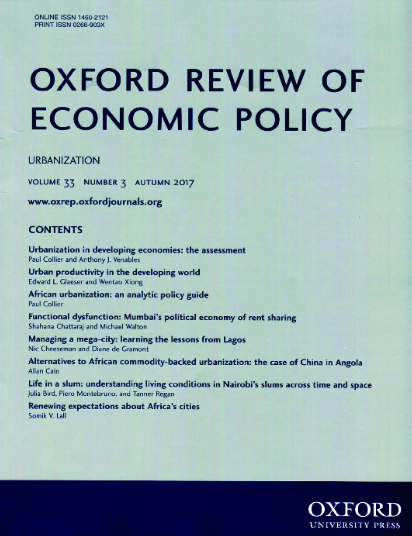50年过去了:布雷顿森林体系对全球宏观经济决策的启示
IF 1.8
2区 经济学
Q2 ECONOMICS
引用次数: 1
摘要
本文首先描述了布雷顿森林体系:它的起源,它的目的是什么,以及它崩溃的原因。然后,我们描述了全球非体系的出现,在这种体系中,通胀目定制取代了充分就业的凯恩斯主义,浮动汇率取代了布雷顿森林体系中固定但可调整的汇率。我们描述了布雷顿森林体系如何着手实现约翰·梅纳德·凯恩斯为一个运转良好的国际经济体系设定的三个目标:没有通货膨胀的充分就业,国家间可持续的经常账户平衡,以及国际金融资本的可持续流动,前提是要促进开放的贸易体制。由于全球非体系现在与布雷顿森林体系大不相同,凯恩斯的目标现在需要以一种非常不同的方式来实现。展望未来,这种非系统将面临许多长期挑战。在全球人口转变方面将出现重要的调整问题;生产率增长可能长期放缓;增加对可再生能源的投资,这将有助于确保世界能够在2050年前实现零碳排放。我们还讨论了与国际资本向新兴市场经济体流动有关的重要政策问题,以及建立主权债务重组机制的可能必要性。然后,我们将继续考虑世界的两个重大结构性变化——欧洲货币联盟的出现和中国的崛起。论文的最后一部分考虑了领导力在这个全球非系统中的重要性。本文章由计算机程序翻译,如有差异,请以英文原文为准。
Fifty years on: what the Bretton Woods System can teach us about global macroeconomic policy-making
This paper first describes the Bretton Woods system: its origin, what it was meant to achieve, and why it collapsed. We then describe the emergence of the global non-system in which inflation targeting has replaced full-employment Keynesianism and floating exchange rates have replaced the Bretton Woods set-up of fixed but adjustable exchange rates. We describe how the Bretton Woods system set about achieving the three objectives laid down for a well-functioning international economic system by John Maynard Keynes: full employment without inflation, sustainable current account balances between countries, and a sustainable flow of international financial capital—on the understanding that an open trading regime is also fostered. Because the global non-system is now very different from the Bretton Woods system, Keynes’s objectives now need to be achieved in a very different manner. Looking forward, this non-system faces a number of longer-term challenges. Important adjustment issues will arise in relation to the global demographic transition; the potential long-term slowdown in productivity growth; and the rise in investment in renewable sources of energy which will be necessary to help ensure that the world is able to move towards zero emissions of carbon by 2050. We also discuss important policy issues in relation to the flows of international capital to emerging market economies, and the likely need for a sovereign debt reconstruction mechanism. We then go on to consider two significant structural changes to the world—the emergence of the European Monetary Union and the rise of China. A final section of the paper considers the importance of leadership in this global non-system.
求助全文
通过发布文献求助,成功后即可免费获取论文全文。
去求助
来源期刊

Oxford Review of Economic Policy
ECONOMICS-
CiteScore
12.50
自引率
1.50%
发文量
41
期刊介绍:
The Oxford Review of Economic Policy is a refereed journal which is published quarterly. Each issue concentrates on a current theme in economic policy, with a balance between macro- and microeconomics, and comprises an assessment and a number of articles. It gives a valuable appraisal of economic policies worldwide. While the analysis is challenging and at the forefront of current thinking, articles are presented in non-technical language to make them readily accessible to all readers. The Oxford Review is aimed at a wide audience including government, business and policy-makers, as well as academics and students. It is required reading for those who need to know where research is leading.
 求助内容:
求助内容: 应助结果提醒方式:
应助结果提醒方式:


